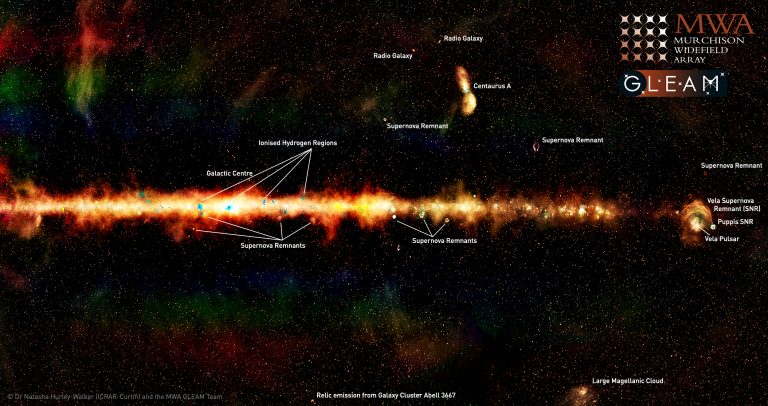Science
Our staff work across five primary science themes, as outlined. These themes tie in directly to SKA science drivers and working groups, with our staff and students possessing the necessary observational, theoretical and computational expertise to enable high-impact results in these fields.
- Accretion jets and slow transients
- Epoch of reionisation
- Extragalactic radio astronomy
- Pulsars & Transients
The CIRA science program is focused heavily on radio astronomy, and closely aligned with several of the major projects planned for the Square Kilometre Array (SKA). In particular, our staff and students make extensive use of the Murchison Widefield Array (MWA), for which Curtin is the lead and managing organisation on behalf of a broad international consortium. Our close connection and daily interactions with the CIRA Engineering group enable our scientists to make the best use of the telescope, and to implement novel and innovative operating modes and experiments. To handle the large volumes of data flowing from both the MWA and the Australian Square Kilometre Array Pathfinder (ASKAP), our scientists make extensive use of the nearby Pawsey Supercomputing Centre, as well as other local and national high-performance computing facilities.

